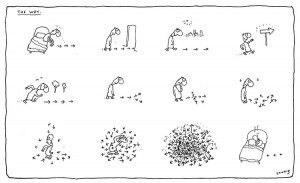. . . and may I take this opportunity of emphasizing that there is no cannibalism in the British Navy. Absolutely none, and when I say none, I mean there is a certain amount, more than we are prepared to admit, but all new ratings are warned that if they wake up in the morning and find any toothmarks at all anywhere on their bodies, they’re to tell me immediately so that I can immediately take every measure to hush the whole thing up.”
Vice Admiral Sir John Cunningham, speaking in Episode 32 of Monty Python’s Flying Circus.
